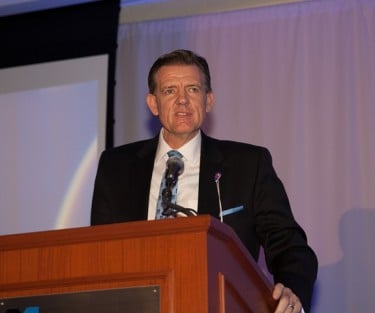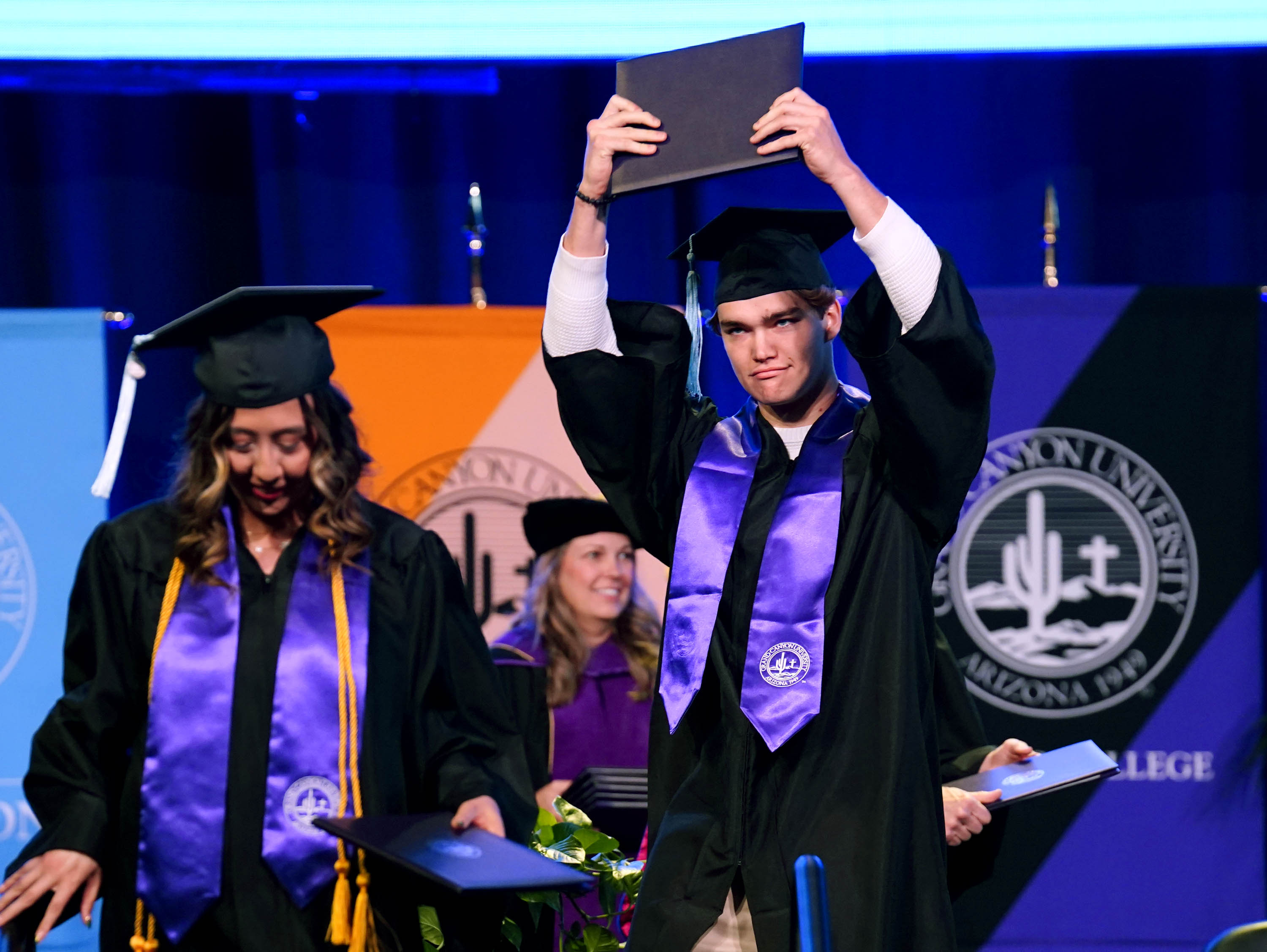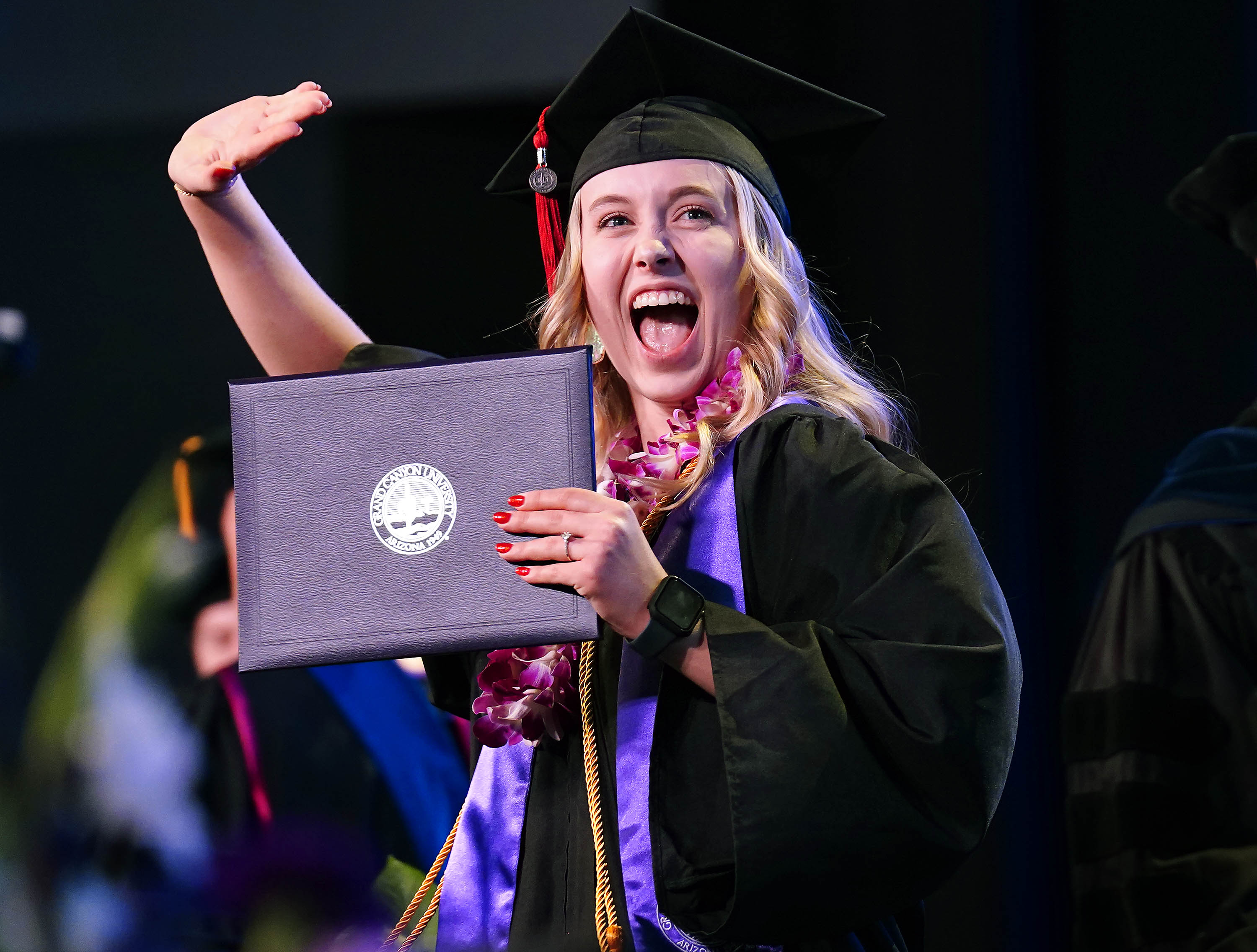By Rick Vacek
GCU News Bureau
Of the five other NCAA Division I transition universities, the one that has the most in common with Grand Canyon University, in terms of its place in the local sports universe, is the University of Massachusetts Lowell.
However, compared to Lowell, GCU has it easy.
While Phoenix’s four major pro sports teams do command a lot of attention, Boston’s Big Four have much more history and far more passionate fan bases. Diamondbacks vs. Red Sox? Cardinals-Patriots? Suns-Celtics? Coyotes-Bruins? Not close, not close, not close, not anywhere close.
That gap is balanced a bit on the college side, where GCU battles for attention with two Pacific 12 Conference institutions in the same state (University of Arizona, Arizona State University) while Lowell’s main competition (Boston College, Boston University and the main University of Massachusetts campus in Amherst) isn’t as prominent.
But GCU and Lowell definitely have one other thing in common: rapid growth. According to a Boston Globe report last November, student enrollment at Lowell had risen 45 percent since 2007, and the university had launched $600 million in construction projects in that span.
“We would not have been able to go Division I without all of the growth on campus,” said Dana Skinner, director of athletics. “That was really the driving force for us.”
The rampant expansion also has been reflected in staffing of the athletic department, which has hired 23 new people and transitioned in seven other employees since July 1, 2013, according to Skinner. “I’m suffering from search fatigue at this point,” he said.
Pete Souris, assistant athletic director for communications, said he needs to hire three people this summer to bring a department that had just one full-time employee a year ago up to five. And he arrived there only in January.
“It’s just been a learning experience the last four months,” he said.
But unlike GCU, Lowell’s athletic focus is on hockey, not basketball. The River Hawks’ hockey team has been playing in Division I since 1984 and made the Frozen Four – hockey’s equivalent to basketball’s Final Four – for the first time in 2013.
Lowell is coming to GCU for a men’s volleyball tournament next year. Here are some other interesting things to know about this fellow transitioner that’s kind of like GCU East:
Location, location, location
Lowell, Mass., is an industrial city of 108,000 about 25 miles northwest of Boston, and it has been through a lot. Dubbed the “Cradle of the American Industrial Revolution,” it was the first large-scale factory town in the country before the textile industry shifted to the South. Lowell’s economy bottomed out in the 1970s, and it has struggled to become a post-industrial suburb.
History lesson
The university’s origins actually go back to two schools – Lowell Normal School, which opened in 1894 and became Lowell State College in 1960, and Lowell Textile School, which opened in 1895. They merged into the University of Lowell in 1975 and became part of the University of Massachusetts system in 1991.
Campus life
The enrollment of 16,969 makes it the second-largest public institution in the state behind the main UMass campus in Amherst. Long considered a commuter school, Lowell has gotten its on-campus population to about 50 percent of the undergraduate enrollment of 12,287.
Conference
UMass Lowell was a perfect fit for the America East Conference, which mainly has universities in New England and New York. (You can see the "Welcome to the Conference" video here.)
Former students of note
Craig MacTavish, the last National Hockey League player permitted to play without a helmet, went to Lowell, as did John Ogonowski, pilot of American Airlines Flight 11 on Sept. 11, 2001 (the one that hijackers crashed into the North Tower of the World Trade Center). Others: former Major League Baseball catcher Mike LaValliere and former NHL goaltender Dwayne Roloson.
D-I effect on athletic facilities
Hockey games are played at Tsongas Center, which seats 6,496, but the basketball teams play there only occasionally because of their lack of attendance and the cost to operate the arena. The men’s and women’s teams played two doubleheaders at Tsongas last season, drawing crowds of 3,000 and 1,700, and the men’s team had one other game there. But most basketball games are played at Costello Athletic Center (capacity 900).
Newsy numbers
The school’s hockey team plays in the prestigious Hockey East Conference, which includes Boston College and the University of Notre Dame, and draws about 5,000 fans per game, while the men’s basketball team averages 450.
Fun fact
UMass Lowell’s baseball research center is the official bat and ball testing center for Major League Baseball.
ABOUT THIS SERIES:
Part 1: GCU came up a winner in Year 1 of D-I. Sidebar: Nebraska Omaha.
Part 2: How three veteran coaches approached and managed the first year. Sidebar: University of the Incarnate Word.
Part 3: Antelope athletes talk about what it took to move up to D-I from D-II. Sidebar: Abilene Christian University.
Part 4: GCU isn't the only university trying to establish itself in a competitive sports market. Sidebar: University of Massachusetts Lowell.
Part 5: Changes and challenges often mark the second year of the D-I transition. Sidebar: Northern Kentucky University.
Contact Rick Vacek at 602.639.8203 or [email protected].





